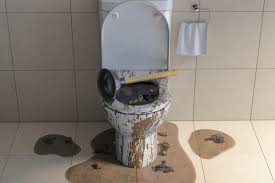Dealing with a clogged toilet can be a frustrating experience, but knowing how to plunge a toilet properly can save you time, money, and stress. Whether you’re a first-time homeowner or just looking to improve your DIY skills, this guide will walk you through the process step by step. By the end, you’ll be equipped with the knowledge to handle most common toilet clogs with confidence.Before you begin, it’s important to gather the right tools. Here’s what you’ll need:
- A high-quality toilet plunger (preferably with a flange for better suction)
- Rubber gloves to maintain hygiene
- Old towels or rags to clean up any spills
- Hot water (optional, for stubborn clogs)
- Dish soap (optional, to help break down grease)
Now, let’s dive into the step-by-step process of plunging a toilet effectively.
- Prepare the Area: Place old towels around the base of the toilet to catch any water that might splash out during plunging. Put on your rubber gloves to protect your hands from germs and dirty water.
- Check the Water Level: The toilet bowl should have enough water to cover the plunger’s rubber cup. If the water level is too low, add some from the sink or a bucket. If it’s too high, carefully remove some with a small container to prevent overflow.
- Position the Plunger: Place the plunger over the drain hole at the bottom of the toilet bowl, ensuring it forms a tight seal. The flange (if your plunger has one) should fit snugly into the drain opening.
- Create Suction: Push down gently at first to expel air from the plunger, then pull up sharply to create suction. Repeat this motion vigorously for about 20 seconds – the combination of pushing and pulling helps dislodge the clog.
- Test the Drainage: After several plunging attempts, quickly pull the plunger away to see if the water drains. If it does, you’ve successfully cleared the clog. If not, repeat the plunging process.
- Flush to Confirm: Once the water drains normally, flush the toilet to ensure everything is working properly. If the water starts rising again, you may need to plunge more or consider using a toilet auger.
For particularly stubborn clogs, you might want to try these additional techniques:
- Hot Water Method: Pour a bucket of very hot (but not boiling) water into the toilet bowl from waist height. The force and heat can help break down the clog.
- Dish Soap Solution: Add a generous amount of dish soap to the toilet bowl, let it sit for 20 minutes, then plunge. The soap helps lubricate the pipes and break down greasy clogs.
- Baking Soda and Vinegar: Pour one cup of baking soda followed by two cups of vinegar into the toilet. Let it fizz for 30 minutes before plunging.
To prevent future clogs, consider these maintenance tips:
- Only flush toilet paper and human waste – avoid flushing anything else, even products labeled as “flushable.”
- Educate household members about what shouldn’t go down the toilet.
- Perform regular maintenance plunges even when there isn’t a clog to keep the pipes clear.
- Consider installing a bidet to reduce toilet paper usage.
Remember that while plunging is effective for most common clogs, some situations require professional help. If you experience any of the following, it’s time to call a plumber:
- Multiple fixtures in your home are backing up simultaneously
- You notice sewage coming up through drains
- There’s water damage around the toilet base
- You’ve tried plunging multiple times without success
With this comprehensive guide, you’re now prepared to handle most toilet clogs confidently. Remember that proper technique and the right tools make all the difference when you need to plunge a toilet. Regular maintenance and mindful flushing habits will help prevent most clogs before they start, saving you from unpleasant surprises in the future.

